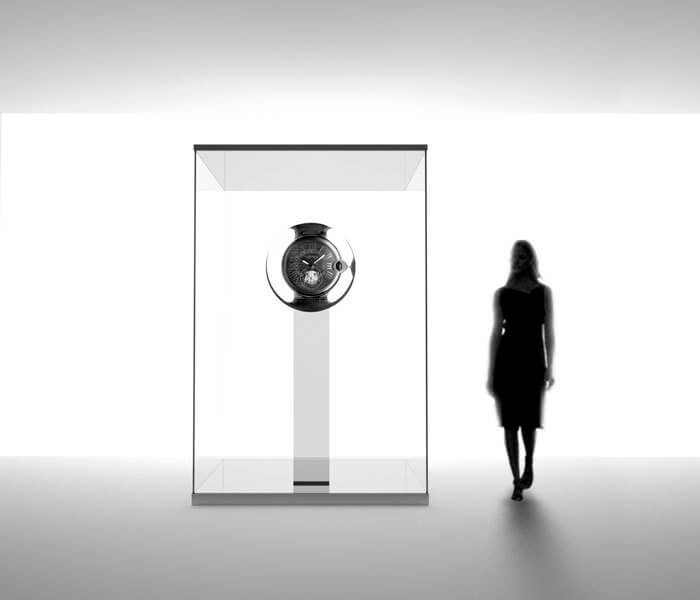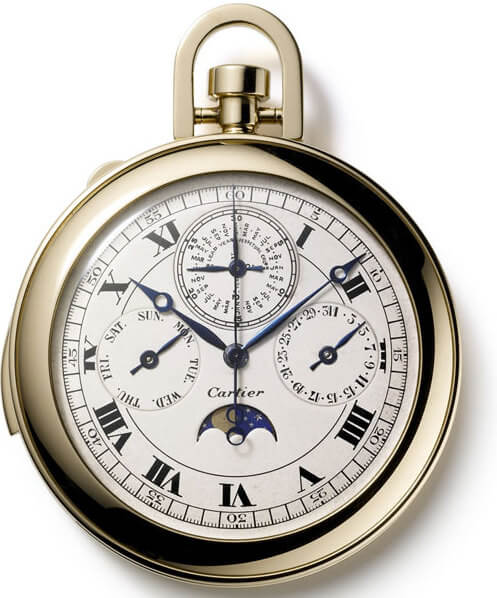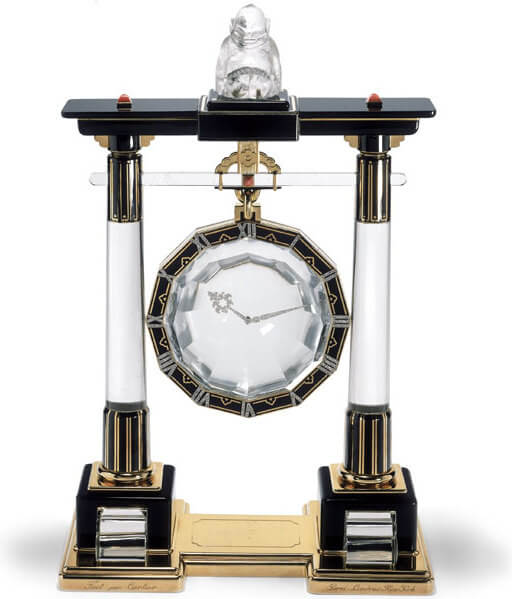Never before have so many Cartier timepieces been shown together in one place, and never before has the company curated an exhibition – Cartier Time Art – devoted entirely to the measurement of time. After a first stop in Switzerland, it will travel outside Europe, including to Russia, China and the United States. “The idea for this exhibition took seed a year ago. We imagined it as a tribute to Cartier timepieces from the first to the present day,” Arnaud Carrez, managing director for Cartier Switzerland, explains. “Historic pieces are thus shown alongside contemporary watches from Cartier’s Manufacture, which has forged ahead in Fine Watchmaking over the last four years. Cartier Time Art bears witness to a heritage spanning more than 150 years, and Cartier’s vitality in time measurement.”
The first Cartier watch in 1853
Established in Paris in 1847, Cartier was quick to propose timepieces for a private clientele, alongside jewellery and objets d’art. The first Cartier watches saw daylight in 1853. Fob watches and châtelaine watches were joined by bracelet watches from 1888. As the catalogue for the exhibition explains, the Santos watch, which was imagined in 1904 and made publicly available in 1911, paved the way for the other now legendary models which established Cartier as the maker of form watches. The Tonneau (1906), Tortue (1912), Tank (1919), Baignoire (1956), Crash (1967), Pasha (1985) and more recently Ballon Bleu (2008) and Calibre (2010) watches are just some of the models in this repertoire.
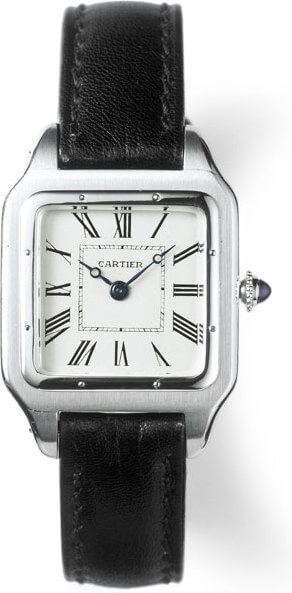
Such fabulous creativity is brought to the fore by 158 historic timepieces, chosen among the 1,400 items in the Cartier Collection which was set in motion in 1983. The exhibition concept, by the Japanese designer Tokujin Yoshioka, is conducive to the magic that immediately takes hold in the half-light of the galleries, where visitors discover a châtelaine watch from 1874, examples of guilloché enamel that rivalled Fabergé himself in the 1910s, the first panther spots of 1914, early Cartier travel clocks from 1925, and clocks inspired by exotic lands, Egypt and China in particular, made at the turn of the twentieth century.
From mystery clocks to the Rotonde Astrorégulateur
Also on show are magnificent complication watches, such as a pocket watch with minute repeater, split-seconds chronograph, perpetual calendar and moon phases, made in 1927, or a minute-repeater Tortue watch from 1928. At that time, Cartier worked with Vacheron Constantin for its mechanisms, and had an exclusivity agreement with Edmond Jaeger, future associate of Antoine LeCoultre. Cartier also had an exclusivity deal with Maurice Couët, who in 1911 began to supply the company with its famous mystery clocks, inspired by those of the illusionist Jean-Eugène Robert-Houdin. Sixteen of them feature in the exhibition. The mystery lies in their “floating” hands, in reality attached to a rock crystal disc with an indented circumference, driven by gears concealed at the base of the dial and connected to the movement by a vertical axle.
The contemporary period is represented by 17 of the 36 models in Cartier’s Fine Watch collection, driven by 12 different movements. Of particular interest, the Rotonde Astrorégulateur de Cartier offers an alternative to the tourbillon to compensate the effects of the Earth’s gravity. Equally noteworthy are a Ballon Bleu Flying Tourbillon, a Calibre Astrotourbillon and a Tortue Perpetual Calendar. All these watches are shown in three dimensions with “explosions” of each movement. This format is especially suited to the skeleton movements which are a hallmark of Cartier. The ID One, which has its own white room, completes the selection. A “laboratory” for the brand’s research, this concept watch requires no regulating whatsoever, even when first assembled, thanks to the kind of state-of-the-art materials that are capturing watchmakers’ attention.
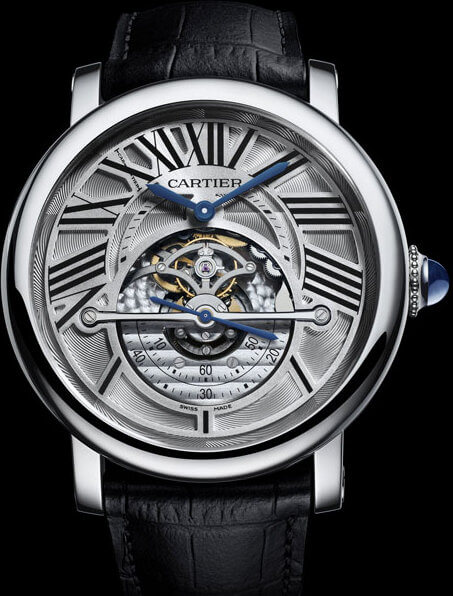
So as to familiarise the public with the complex techniques of watchmaking and the knowledge required to produce these exceptional timepieces, information panels explain how a movement is designed, the different types of finishing, the concept of Manufacture, and the criteria required by the Poinçon de Genève, which now distinguishes many of the Cartier watches which are helping to forge the company’s future.
*Cartier Time Art at Museum Bellerive, Zurich, until November 6th 2011.








